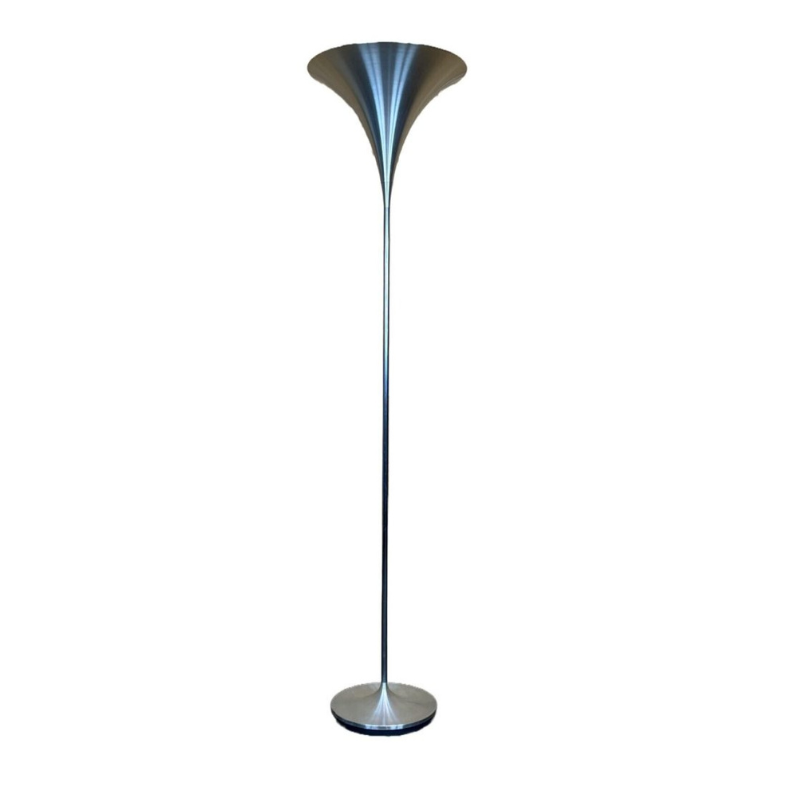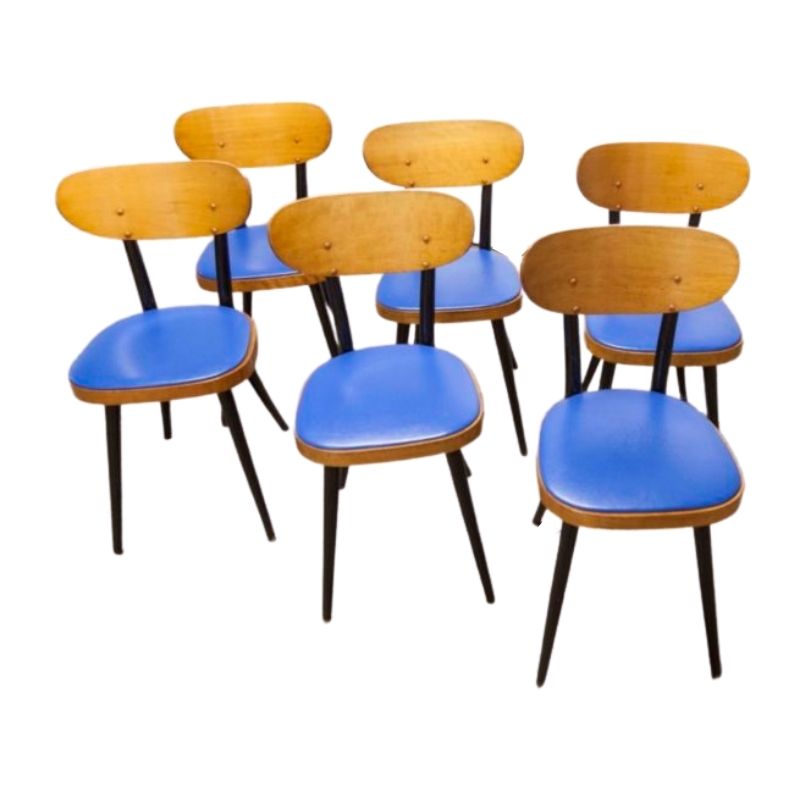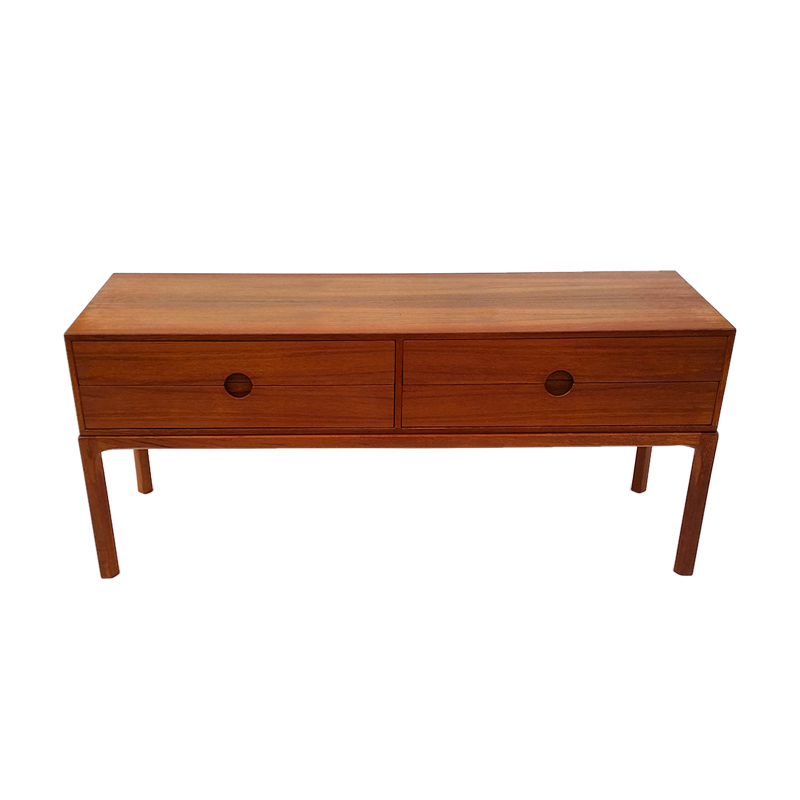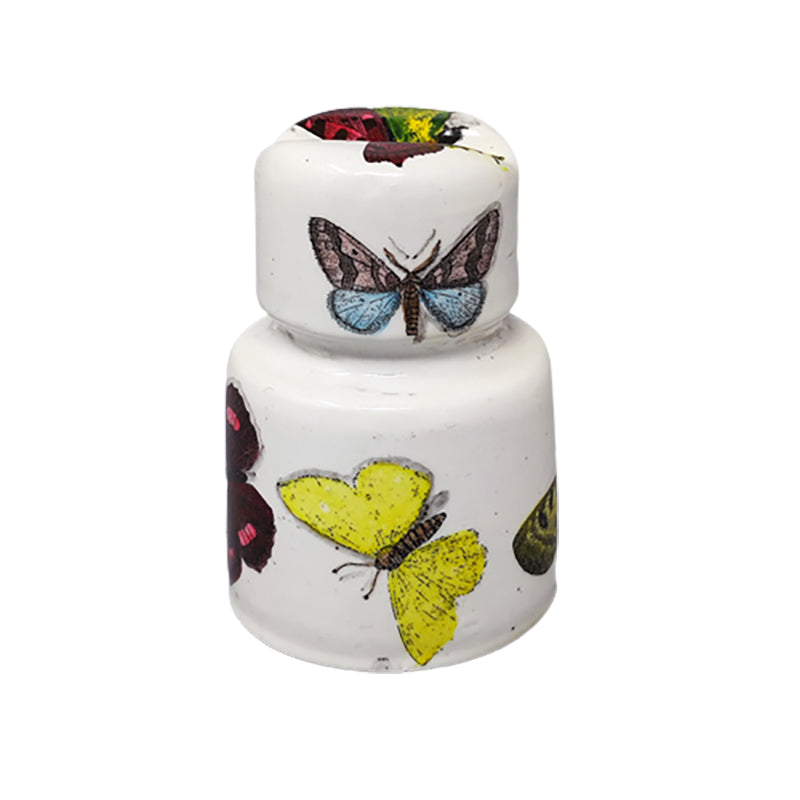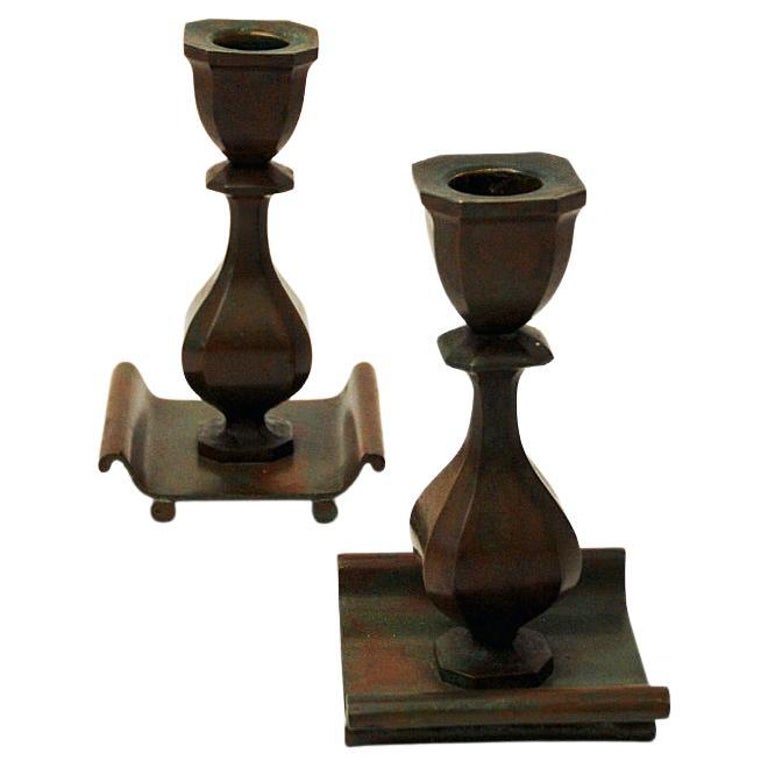Can anyone help me ID this teak coffee table? Unfortunately there are no labels or marks ... and I'm not having any luck with my Googling. It measures approximately 43" in diameter by 20" tall. The two most distinctive features are:
1. The central cutout, which appears to have once had something set inside. Approximately a quarter inch of that inner top surface is slightly discolored, which makes me think that something went in there.
2. The conical mounts where the legs connect to the top. I've included photos of how that assemble looks/works.
I'd appreciate any help at all. I'm sure I've seen this style leg somewhere before, but I just can't place it ...
Thanks!
Scott <img class="wpforo-default-image
<img class="wpforo-default-image
I have a couple of comments; one might be helpful, the other certainly not.
It appears from the photos that the table top might be solid teak, and not teak veneer (i.e. I cannot see any edge banding and the grain does not appear to be bookmatched). Is this true or is my vision failing? Solid teak table tops of 43" diameter are not that common.
Second, I can't say that I appreciate the use of conical leg capital for this design. Conical capitals (and other capital designs) were developed for building structural columns to better spread out the vertical loads over a larger surface area, thus reducing the chances of shear failure in the slab (punch-through). Whether this table is solid teak or veneer, there are no feasible loads that would warrant any type of column capital for structural purposes. Therefore the capital can be viewed as a visual component that is not necessary for the design, and not in harmony with the modernist philosophy. Having said that, it appears that the capital is well constructed and of pleasing proportions to the eye. In case you're in doubt, this would be the unhelpful comment.
Actually, I can be even more unhelpful and pile on about the conical capital. The short length side grain is very weak. If you push on on the table in the wrong direction that capital is too easily split.
There is another maker who did this sort of thing, but it is different and unrelated.
Thanks leif ericson. I was assuming it would be some sort of tray that went in the hole. Possible aluminum, galvanized, or even enameled piece. I think a planter would be too heavy -- the hole is large, and anything filled with that much soil -- even if shallow - would weigh quite a bit. If I can't track down any specific information I may just have a tray fabricated and powder coated.
Appreciate the input.
Is this the same table?:
http://www.lauritz.com/da/auktion/nanna-ditzel-1923-2005-rundt-sofabord-...
I will caution you strongly NEVER ever, ever believe what Laurits claims without independent verification. Lauritz is not reliable. I will tell you, however that I have sometimes succeeded in verify things Lauritz has claimed, so It is a good lead to follow up.
Søren Willadsen is was not reliable with marking stuff either.
And, hey, if it is indeed the same table, you know what goes in the hole.
i can't tell if any of these coffee tables are the same as each other, but here is another lead:
https://aleph-01.kb.dk/F/6XU6XCUE8GFYHN46TCIXUITKHK2MLEX7AQENPL4IMIL86Q5...
And perhaps it is not a basket that goes in the hole.
Can we get some more photos of your table so we can get a better sense of things?
The Ditzel attribution is correct. They are still in production by Snedkergaarden Them: http://www.snedkergaarden.com/Nanna-Ditzel.117.aspx
I believe you should really consider putting a Korean barbecue grill in this hole.
I still can't quite tell if scottlindberg's table is the same as these. The legs seem more splayed out on the DFI one made by Poul Kolds Savværk. And the Snedkergaarden version has a solid walnut top, which seems odd compared to the veneer top, and the walnut pediments are one piece of wood not two, and the legs are vertical?
If you need any help, please contact us at – info@designaddict.com






